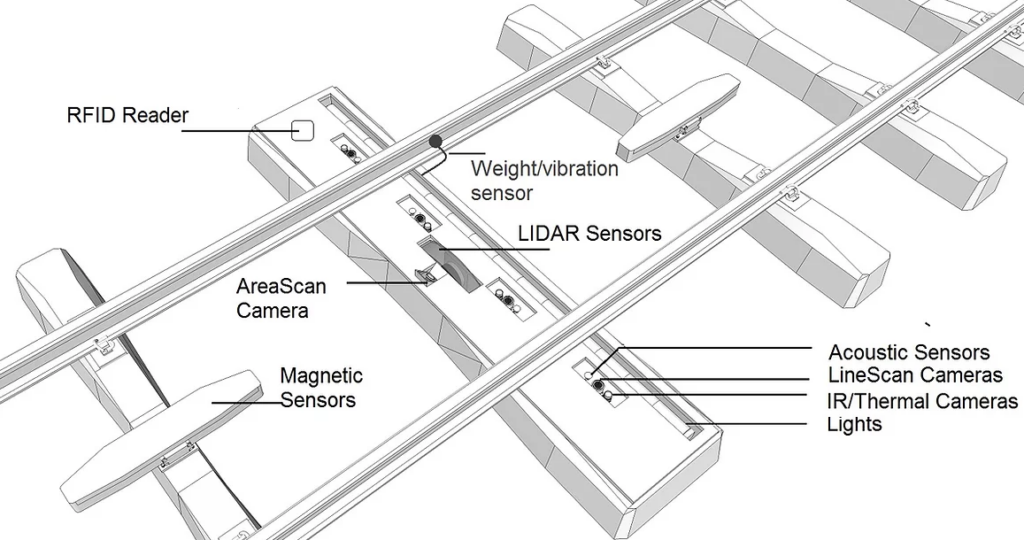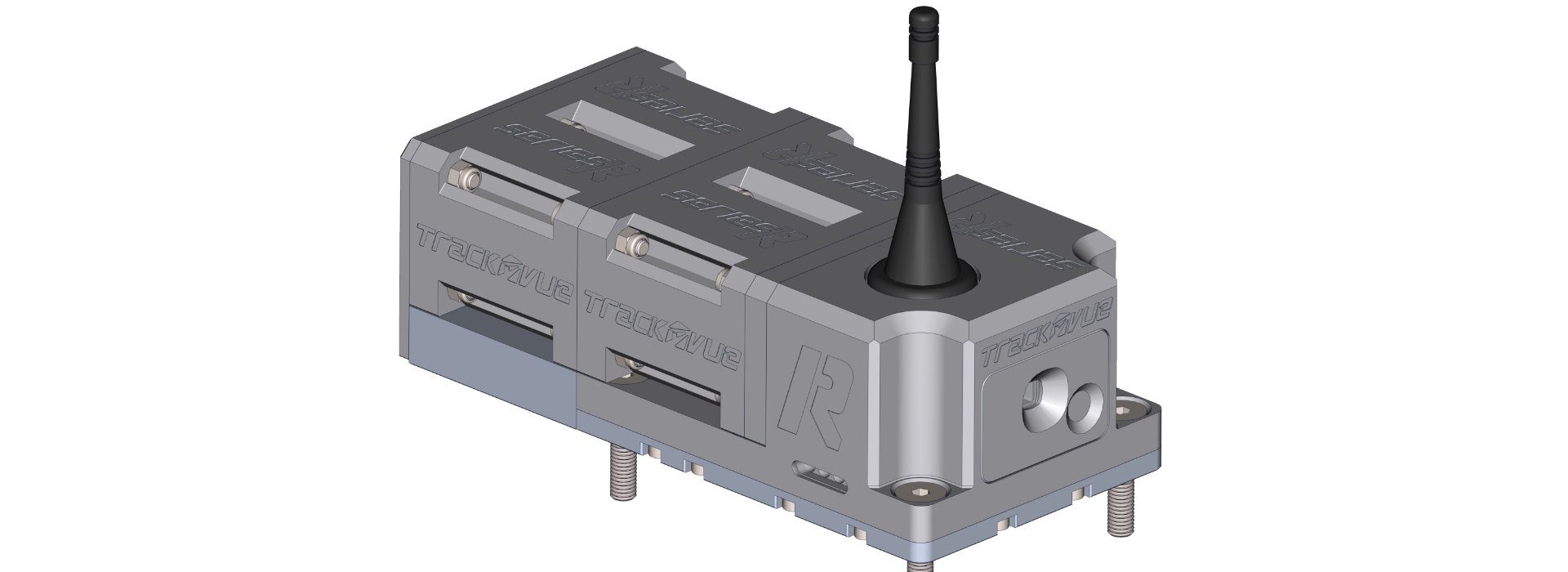TrackVue R Series
R series products are designed for rolling stock inspection and may require wayside or on-board installation. The products provide a comprehensive evaluation of rolling stock using non-contact sensors for train speeds of up to 160 kmph. System output includes:
- Underframe imaging, acoustic and thermal sensing for identifying rolling stock repairs at line speeds
- Measurement of wheel tread, root and flange along with visual defect detection on surface
- Sensor networks for localised data transfer between sensor device mounted on the rolling stock
- On-board condition monitoring devices for measuring thermal, acoustic and vibration of rolling stock
- Rail wheel interface analytics on new and worn wheels using track geometry and rail wear data
- Measurement of noise and vibration at bogie and coach level for understanding vehicle and passenger experience
- Real-time safety related measurements and integration for positive train control
- Driver analytics and support understanding driving behaviour and assistance with poor visibility
On-board condition monitoring
OCMS is a rugged sensor network device for use on rolling stock. It is battery driven, lightweight, portable and easy to mount device that is capable of processing acoustic, vibration and thermal data. OCMS is a non-contact device, ideal for monitoring various rolling stock sub-components that may indicate failure in operation based on abnormal acoustic, vibration or thermal pattern. Multiple OCMS devices configured with their communication network can be planted in areas that need monitoring and work in real-time by analysing input data. OCMS is a unique patented technology that maximises battery life by using a wake-up/sleeper mode of operation whereby sensors only work when vehicle is in motion. Alarms are generated and passed through the sensor network to driver console and in parallel to a cloud hub which provides real-time backend for operational control.

- Sensor network device
- Battery operated, wireless
- Battery life approx 2 years
- Thermal, Acoustic & Vibration measurement
- Applications include bogie & wheel monitoring, engine monitoring etc.
- Low power consumption
- Detects wheel squealing, and faults with bogie components (e.g. wheels, brakes, bearings) and radiator and engine components.
OCMS may be used for monitoring various elements of the bogie including bearings, axle, brakes, gearbox, and wheels. A combination of acoustic and thermal analytics can indicate failed bearings in real-time. Continuous monitoring of components 24/7 allows OCMS devices to collect detailed data that can be used for predictive maintenance. Since the devices are fixed in close proximity to what is to be inspected, there are very few false positives. OCMS provides an excellent alternative to wayside Hot Axle Box Detectors. Additionally, these detect wheel screeching noise which is evaluated together with other rail-wheel interface data to isolate track sections with issues. This removes the need for trackside noise and vibration measurement studies which are not capable of finding the real issues. The sensor network also offers an excellent opportunity for other train data to use a localised network which does not interfere with WiFi band to transmit data. Once installed, OCMS devices automatically form a network connection with each other and with the driver console which further transmits data to a cloud hub. Each unit self-analyses the data received for generating alarms, and sends the message to the driver. The thermal sensor options allow for a 8×8 pixel window of a specific spot to be monitored. The physical size of the spot monitored depends on distance between sensor and object. Acoustic and vibration sensors collect real-time data that is processed using signal separation tools to isolate features of interest and detect alarms. These alarms indexed by OCMS unit ID, their position on the coach, time and GPS are transmitted.
OCMS provides an excellent low cost solution to monitoring every bogie and its components including bearings, wheels, brakes, and may be used on engine components, airconditioning radiators and other motors to diagnose abnormal behaviour (breakdown or condition deterioration) based on changes in thermal, acoustic or vibration properties. It also forms a data bus outside of train information management system that can be used to transmit other sensor data in real-time. An-board master computer on the train manages alerts from all devices and communicates with a cloud platform in real-time. The users receive all alarms and information through the cloud interface.
Underframe condition monitoring
Rolling stock underframe diagnostic system is important for prioritising how rolling stock is repaired and maintained. Our machine vision inspection system performs a comprehensive rolling stock condition evaluation using linescan, acoustic, vibration, thermal and laser sensors.

The system uses high intensity LED lighting to image the side and under-frame areas of a train which could move at variable speeds of up to 160 kmph. The system uses the same linescan technology we use for track inspection to record underframe continuous images that are then used as input for AI based data analytics. In addition, we use high speed thermal imaging to detect hotspots which are then indexed against component identity. Lasers profile the undercarriage area to provide a 3D surface map which is used in conjunction with linescan imagery to determine the components and any detached ones.
The sensor unit is coupled with a wayside processing system often housed in a secure electrical cabinet or hut which is connected with operational command centre through a high speed communication link to provide high speed real time analytics. The following optical and thermal data shows some of the views of our system. The laser and optical systems also fully profile wheels and determine their diameter, wear and surface quality.



